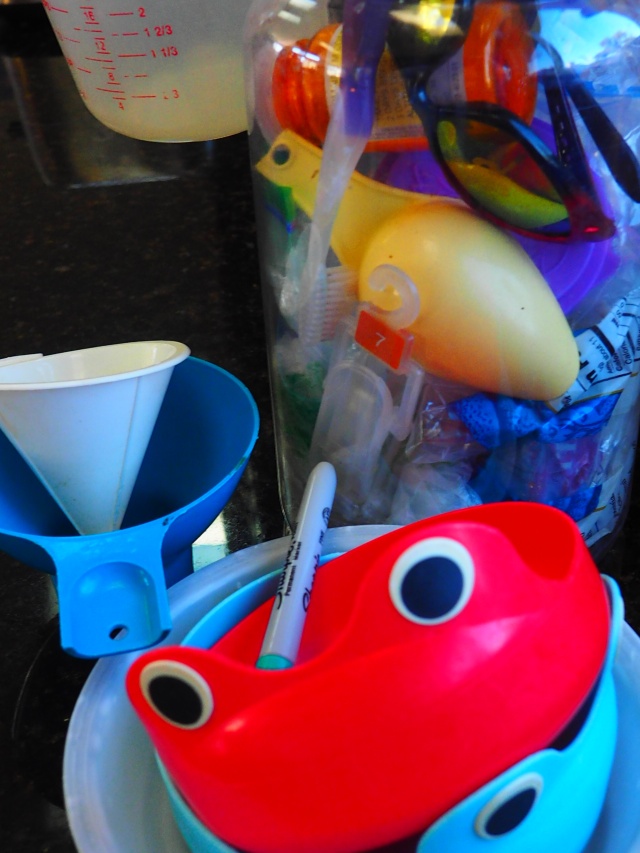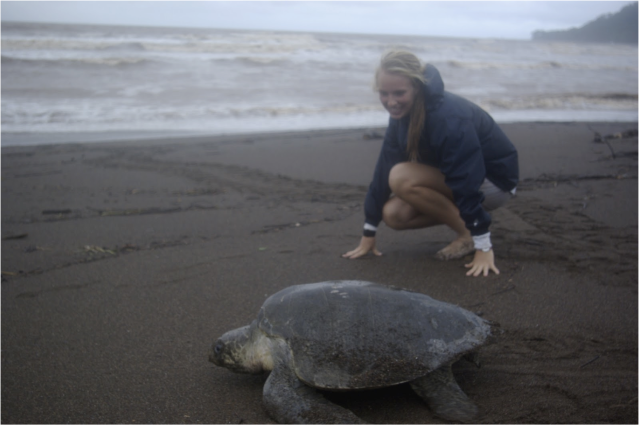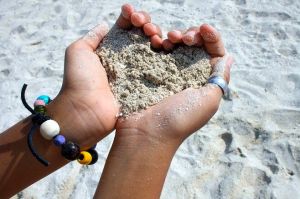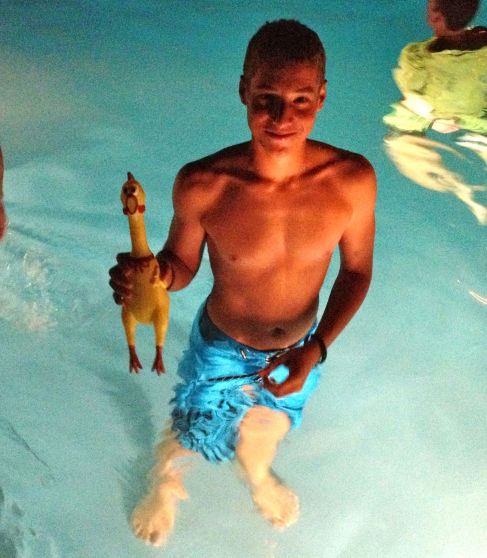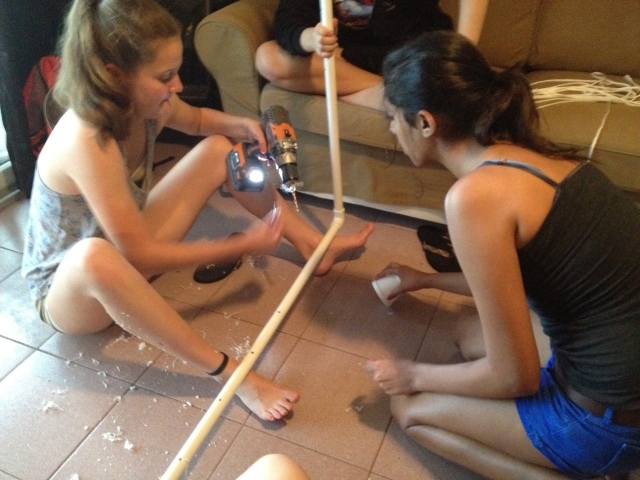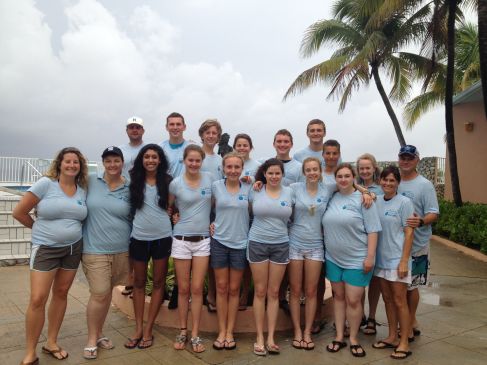
It has been six days since our plane landed, and we have yet to see the sun! Tropical storm weather has made it hard for us to collect our research and dive this week, but we have been troopers. We completed at least one dive a day, battling currents, winds, and even fire worms!
On Wednesday, conditions around our hotel were so rough that we had to drive to the north side of the island to carry out our first research dive. Once we got there, we had to get into the water by going down a ladder: something we’re not used to doing. The worst part was that, as we looked down, there were thousands of tiny, spiky sea urchins! We swam across the mine field of sea urchins and dove down a wall. In addition to the beautiful array of coral and fish that the Caymans typically offers, we saw a green turtle. After viewing the turtle, we started our research: however, one of our quadrants had been broken in the process, so we all shared one quadrant.
On the way back from our research dive, we visited the Caymanian town of Hell. Yes, you read that right. The town is actually called Hell. As our van pulled up, rain (as it had all week) poured down it sheets. We took off our shoes and dashed into a tiny gift shops where we sent our families post cards postmarked from Hell.
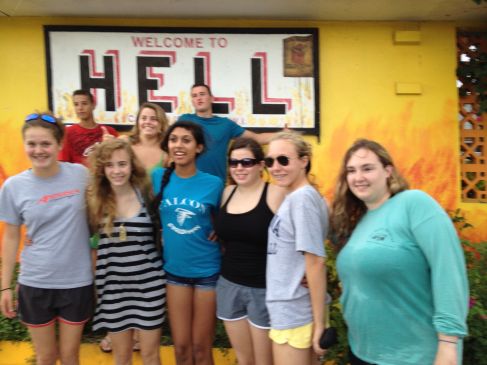
The next day, we loaded up into two vans and visited Georgetown for a morning of shopping after an intense game of trivia. Then, we changed into our gear and headed toward the infamous Sting Ray City. The goal was to feed the string rays by holding the squid in two fingers and allowing the rays to suck the food up with their mouths. More times than not, however, the sting ray would end up charging into us as we dropped the food and dove into the sand for safety. Tim actually got his thumb bitten by a ray! Fortunately, he was fine because rays chew their food by grinding it against their plates. There were points when we could hear each other scream through our regulators as some of us clutched onto each other to avoid the dreaded ‘ray hickies’. Nevertheless, between diving for safety and feeding the rays, we had so much fun…until we got onto the boat and realized that most of us had somehow got into contact with fire worm! We healed our burning welts with paper towels soaked in vinegar, and we were fine.
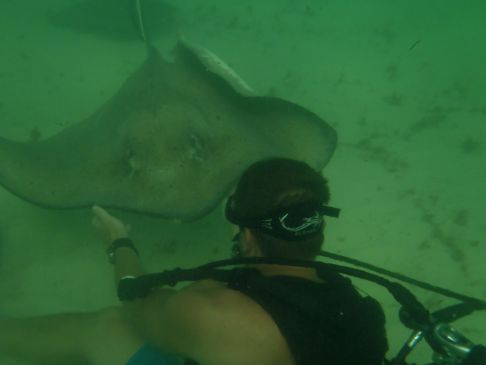
Today, we had an awesome two-tank boat dive off of the Kittewake wreck and Devil’s Grotto. Kittewake was an old boat that had been sunk more than sixty feet under the water as a scuba diving attraction. We got our pictures taken with the propeller, and dove through the top three decks, observing the colorful damselfish and baby pufferfish that had inhabited the wreck. As we ascended from the site, we turned around and saw a barracuda staring right back at us! We gave him his space, needless to say.
Devil’s Grotto was also incredible. So many colorful fish and coral! Words can not even begin to describe it.
Stay tuned! We’ll keep you updated!
